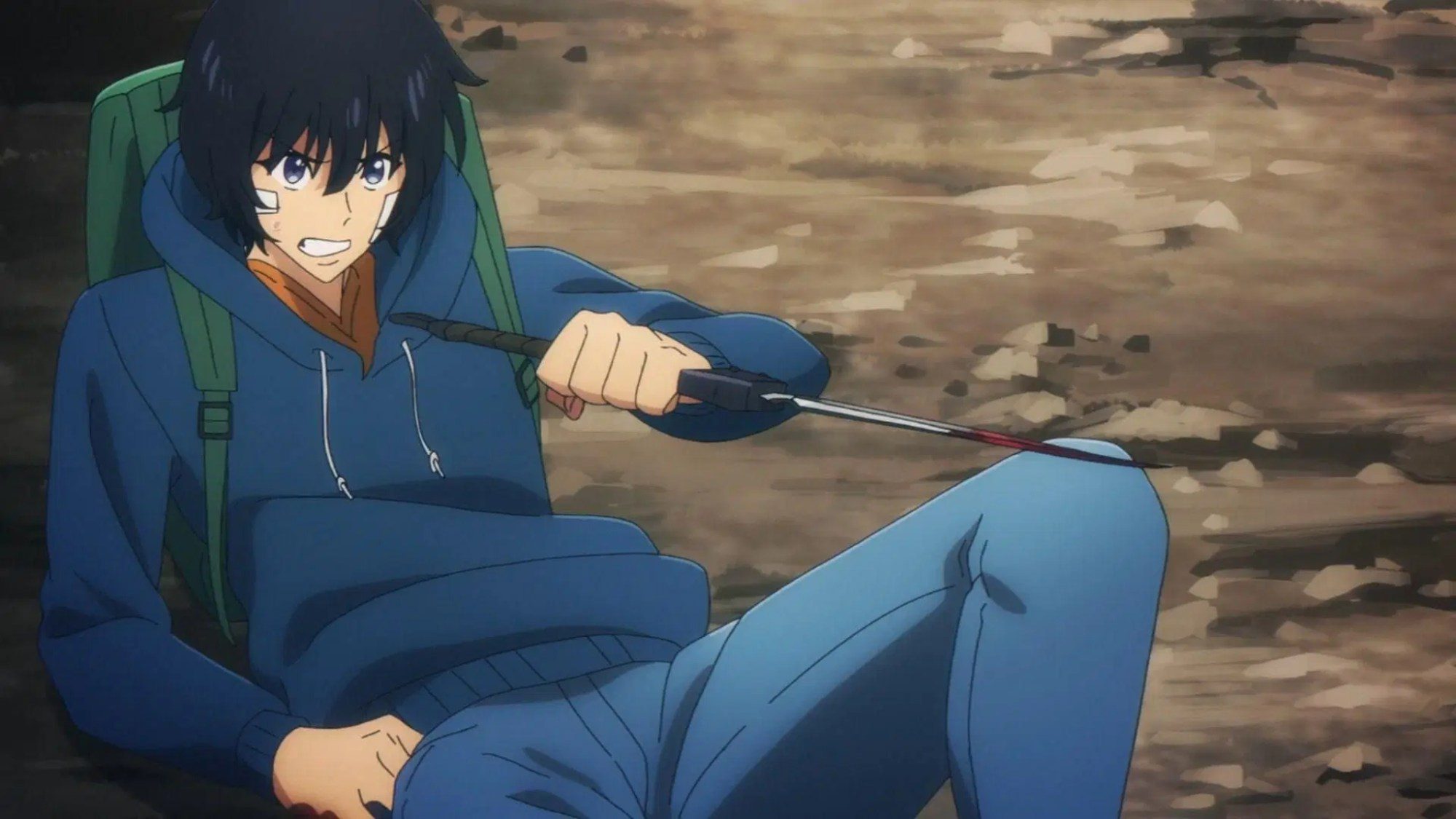The anime adaptation of Solo Leveling follows the journey of E Sung Jinwoo, who, after obtaining a leveling-up system, finds himself in a world where the strength of hunters cannot change. In this system, Jinwoo completes dangerous challenges and must train rigorously to become the strongest hunter in the world. As we’ve seen, Jinwoo appears in Part 1, Episode 1, while his character in Part 2 is released almost like two different individuals. But does Jinwoo’s training regimen have any impact on real life, and should you follow it?
When Jinwoo wakes up in the hospital after a double dungeon in the first two episodes of Part 1, he receives a daily challenge. Jinwoo must run 10 kilometers, do push-ups 100 times, sit-ups 100 times, and squats 100 times. Any anime fan will undoubtedly recognize this as a training regimen reminiscent of Saitama from One-Punch Man.
Initially, this habit poses significant challenges for Jinwoo and is quite a sight to behold on screen. However, the truth is that anyone can implement such daily challenges themselves. Even if you cannot transform into the Shadow Monarch, you can still build strength and endurance effectively.

Jinwoo’s Training Challenges: Difficult Yet Achievable
Before we analyze Jinwoo’s complete training habits, let’s examine how they operate and what benefits they might offer. With the right consistency, regularly practicing these habits can lead to a slender and sturdy physique.
You won’t build a body resembling Goku just from this regimen. Instead, squats and push-ups are considered excellent exercises for health. Due to the high repetition range required to achieve a visible difference, these exercises will test your endurance (the time you can sustain these exercises) rather than your overall strength. Your endurance will surely improve and develop slightly, but maintaining high repetition isn’t necessarily the best approach for developing strength in a bodybuilding style.
Despite the daunting challenge of 100 repetitions, it isn’t overly difficult if you break it down into smaller, achievable goals. If you can’t manage 100 repetitions, divide it into 10 sets, with each set containing 10 repetitions, allowing at least a minute of rest between each set. Ultimately, Jinwoo has 24 hours to complete his daily challenges. By adopting this strategy for squats and push-ups, breaking them into manageable segments not only helps you tackle the mental aspect but also makes it easier to implement physically.
If you can’t complete any of the exercises above, you might struggle with physical limitations or existing mental barriers, but there are plenty of alternatives to each exercise.
If you can’t fully do the push-ups, try doing them on your knees; this method helps beginners start off more comfortably. If the challenge seems too daunting, try performing them on an elevated surface, as this can help reduce the load. For squats, place an object under your feet, which can help improve your squat depth. Moreover, using a chair for squats is an excellent way to increase your squat depth significantly. When performing squats, start with your feet shoulder-width apart, then gradually lower yourself down. Hold the position and then rise back up.

Jinwoo’s 10 km Running Challenge
Even for seasoned runners, running 10 km every day is a considerable challenge. When you begin your training journey, it will take time to build endurance. However, this challenge can easily be divided into manageable goals.
Start by running 10,000 steps daily. You don’t have to run; even walking 10,000 steps can significantly benefit your long-term health. Once you feel comfortable, you can try running 2-3 km three times a week (with 3 km not taking more than 25 minutes for beginners, though it can feel taxing if you’re out of practice). As you grow more comfortable, aim to increase your distance to 5 km two times a week, and potentially run 10 km once a week. This gradual progress will ultimately lead to long-lasting results.
Running daily can greatly benefit your cardiovascular health and overall endurance, and it also provides significant advantages for weight management. Additionally, running can help strengthen the muscles in your legs.

Challenges in Jinwoo’s Daily Training
It’s important to note that Jinwoo’s daily workout regimen isn’t designed by a professional trainer, which can lead to significant inconsistencies.
Firstly and most importantly, this daily training schedule allows minimal rest between sessions. For Jinwoo, this is not a problem since he can recover entirely after completing his challenges. But for us, it’s different.
Training at a high intensity creates small tears in your muscles. When your muscles repair these tears, they adapt and strengthen. If you don’t allow for rest, your body cannot repair itself, which may lead to injury and overall fatigue. This is not only relevant to push-ups and squats but also applies to other exercises.
However, if you’re just starting, it’s crucial to focus on completing the daily challenges. If you find yourself struggling to maintain a 10 km run daily, try alternating your runs with walking. This way, you can gradually work your way up to running the full distance consistently.
Moreover, the exercises in Solo Leveling involve a core set of movements. Looking at Jinwoo in Part 2, his role has expanded based on the number of supporting characters introduced. This reflects the evolution of his character as he trains and develops alongside others. However, without regular practice on core movements, Jinwoo would not be able to grow effectively.
Core strength is essential for performing dynamic movements effectively. Pull-ups are excellent, but they can be challenging to execute consistently, especially for many professional athletes. The best alternative is to invest in a resistance band, attach it to something sturdy, and perform exercises that mimic pull-ups. If you don’t train your core, you might not only neglect aesthetics but also risk serious injuries to your back and shoulders.





















